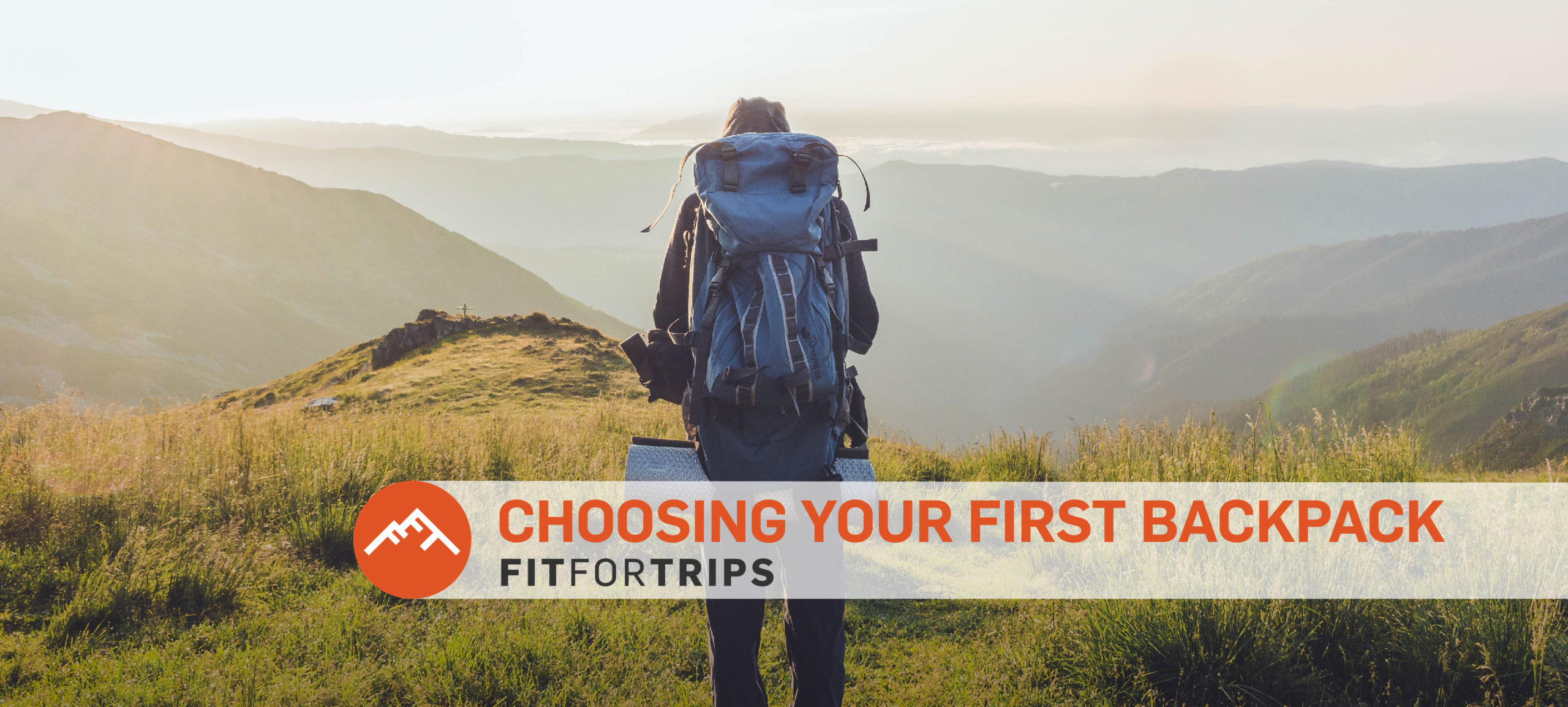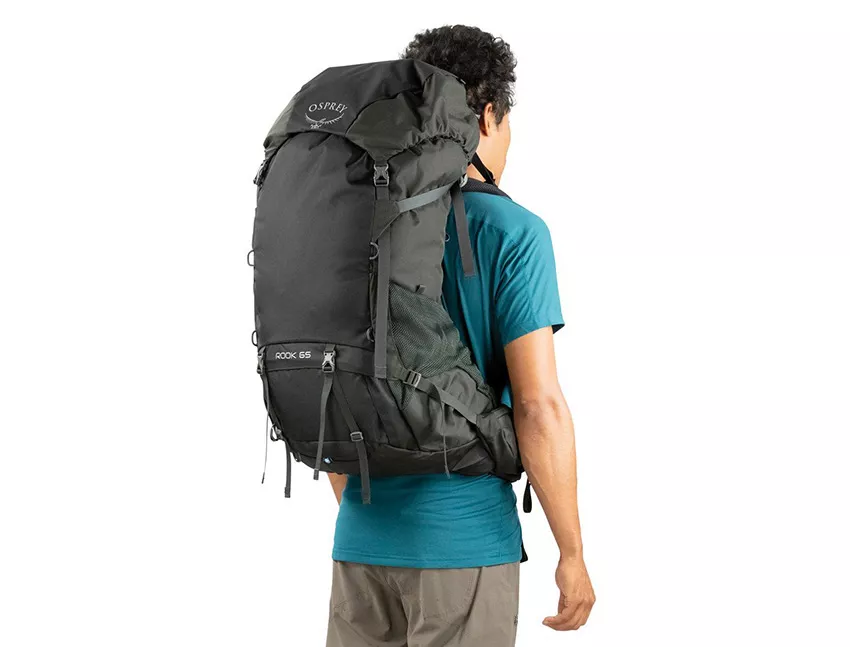Backpackers Pack: How to Simplify Choosing Your Very First Pack

You Should Get a 55 to 65 Liter Backpackers Pack
If you’re new to backpacking, choosing which pack to get can be overwhelming. A typical backpack trip lasts 2-3 days and requires 55-65 liters (3400-4000 cubic inches) volume for this amount of gear. This size pack should easily carry all your gear in moderate fall/spring weather. This gear includes a tent, sleeping bag, sleeping pad, stove system, clothing, food, first aid kit, and water. (Note that I will not be addressing lightweight, specialized backpacking gear which weighs less, packs smaller, and is far more expensive.)
Which Backpackers Packs Frequently Have a Reliable and Comfortable Fit?
Backpackers packs are available in a huge range of prices, features, and quality. Note that if you order a pack online, make sure it has a good return/exchange policy. Pack fitting is an art as much as a science, so some hit-and-miss is to be expected.
Frequently Sold Backpackers Packs Under $200
I picked 3 quality brands with 100% guaranteed packs at moderate price points that come with a manufacturer’s warranty. They all have adjustable shoulder harness systems and have the features you need. Most backpackers should be able to get a good fit with these packs.
Granite Gear Crown2 60 Pack – Men’s
REI size and color availability good ($199.95)
Granite Gear Crown2 60 Pack – Women’s
REI size and color availability good ($199.95)
Osprey Rook 65 Pack – Men’s
Official Osprey site ($165.00)
Osprey Renn 65 Pack – Women’s
Official Osprey site ($165.00)
REI Co-op Trailbreak 60 Pack – Men’s
REI availability good ($149.00)
REI Co-op Trailbreak 60 Pack – Women’s
REI availability good ($149.00)
How to Condense Gear in Your Backpackers Pack
One thing to keep in mind is how much room your sleeping bag will take up. An inexpensive, synthetic fill camping-style bag could take up half of your pack! A backpacking specific sleeping bag will pack down smaller and take up far less room (check the Kelty Cosmic series, which is a good value). You can also use a compression sack (15 to 20 liter sack will fit most sleeping bags) to get your sleeping bag really small. Additionally, an inflatable or thin foam sheet sleeping pad will pack down small.
 Osprey Rook 65 Men’s Backpackers Pack features AirSpeed back panel with adjustable shoulder harness. Fits a wide range of torso lengths.
Osprey Rook 65 Men’s Backpackers Pack features AirSpeed back panel with adjustable shoulder harness. Fits a wide range of torso lengths.
The other item that takes up major space is food. Try to repackage your food to minimize the space needed, such as taking crackers out of the box and putting them in a Ziplock bag. Winter clothing can take up some space, too, but I’m assuming you’ll be hiking in moderate weather without the need for a heavy insulated jacket. A small backpackers specific tent may fit inside your pack, but tents with long poles may need to be strapped to the outside of the pack.
 Osprey Renn 65 Women’s Backpackers Pack features an AirSpeed back panel with an adjustable shoulder harness to fit a wide range of torso lengths.
Osprey Renn 65 Women’s Backpackers Pack features an AirSpeed back panel with an adjustable shoulder harness to fit a wide range of torso lengths.
A typical backpackers pack will typically weigh 28-32 pounds, which includes enough gear for 2-3 day trips during the fall or spring with room to haul the goods comfortably. Your choice of gear can dictate whether your pack weighs less or more. The weight matters because you will be the one carrying it, so choosing a pack that is comfortable to haul 30 pounds is critical to enjoying your experience!

Important Note on Packing Light vs Comfort
If you are just getting into backpacking, comfort is important for your first adventures. After a few outings you will gain confidence and feel like experimenting with less bulky pillows and sleeping mats. So, check out the Sea to Summit Sleep System Finder (look for the popup window) to help you identify a sleeping bag, sleeping mat, and pillow based on weight vs comfort. Answer the questions initially by leaning towards comfort. In the future, you can trend towards lighter and less bulky.
Earlier we discussed using a compression sack to reduce the volume of the sleeping bag inside the the pack. This allows you to carry a pillow and mat with more comfortable material.
How to Pack A Backpackers Pack for 2 to 3 days
We will not reinvent the wheel for packing your pack the “right” way, so, refer to these resources whenever you purchase your backpackers pack:
How to Pack and Hoist a Pack (article and video)
Modular Packing in Your Pack (article)


How Do I Keep Gear and Clothing in My Backpackers Pack Dry?
Accessory rain covers are available for most pack sizes, and some packs come with a rain cover. The problem with a rain cover is that the part of the pack touching your back is not covered. Eventually the fabric gets wet, water seeps through the seams, and the gear in your pack becomes wet. Let’s not forget that putting on and taking off the rain cover to get inside your pack is a PIA. An easy way to keep the gear in your backpackers pack dry is to use a trash compactor bag or waterproof pack liner. Line the inside of your pack with the waterproof bag, then put your gear inside. Roll down the top of the bag before closing the top of the pack. Your pack will get wet, but your gear will stay dry. This is the method preferred by long distance hikers because it works and it’s a cheap solution!

And remember, it’s always a good idea to ensure that you’re physically ready for your next backpacking adventure trip. Contact us today for a free fitness consultation to get the best results during your next backpacking trip.
